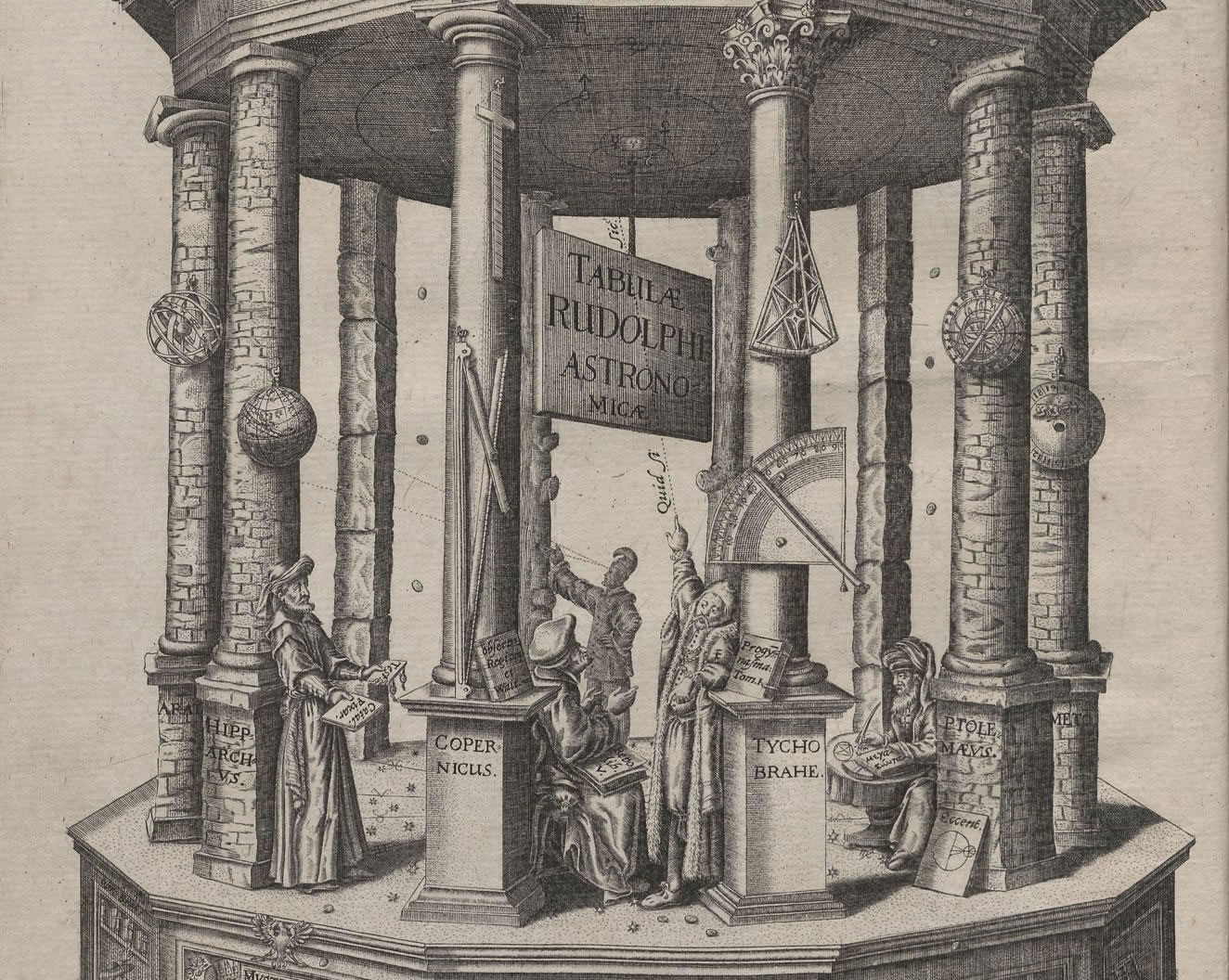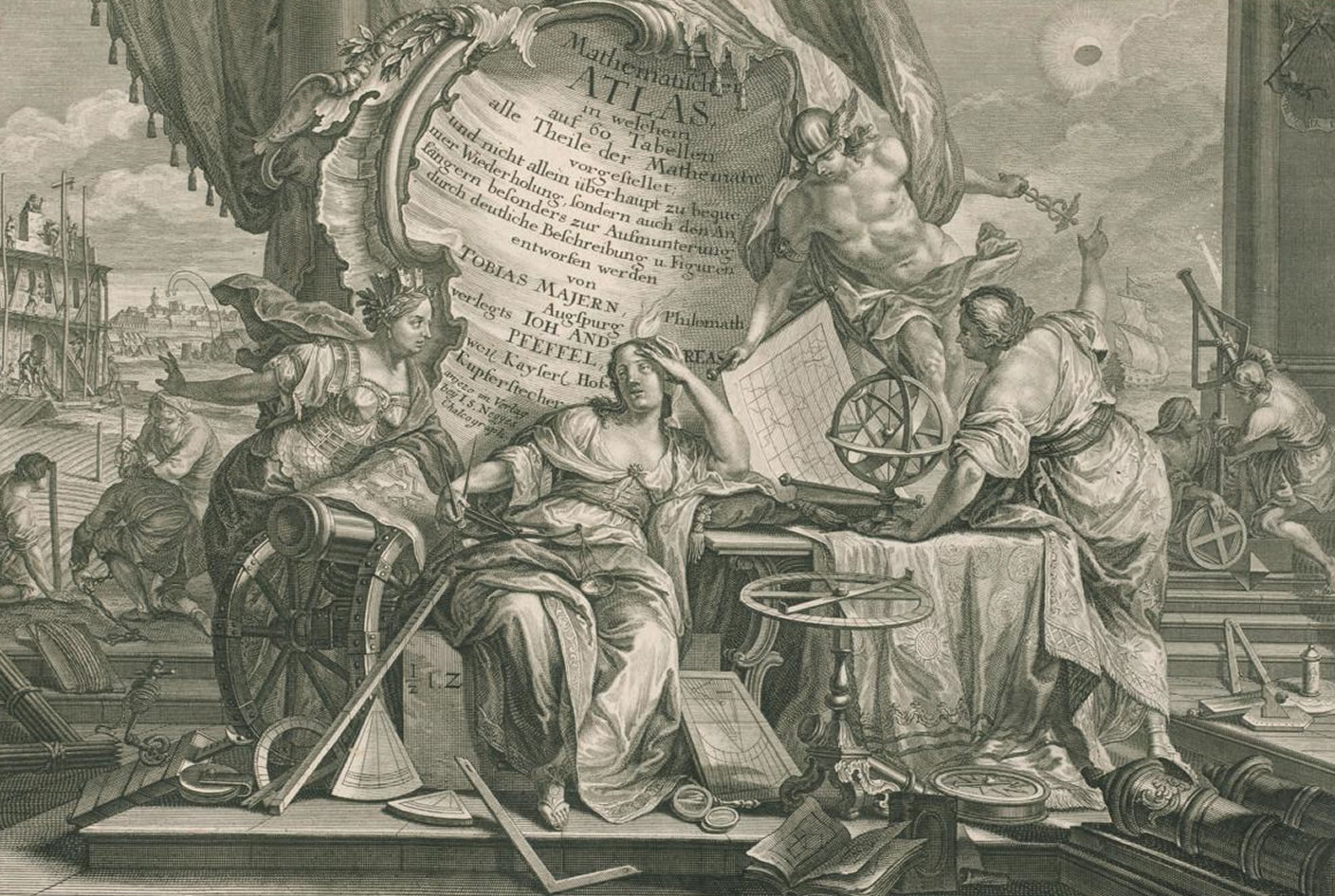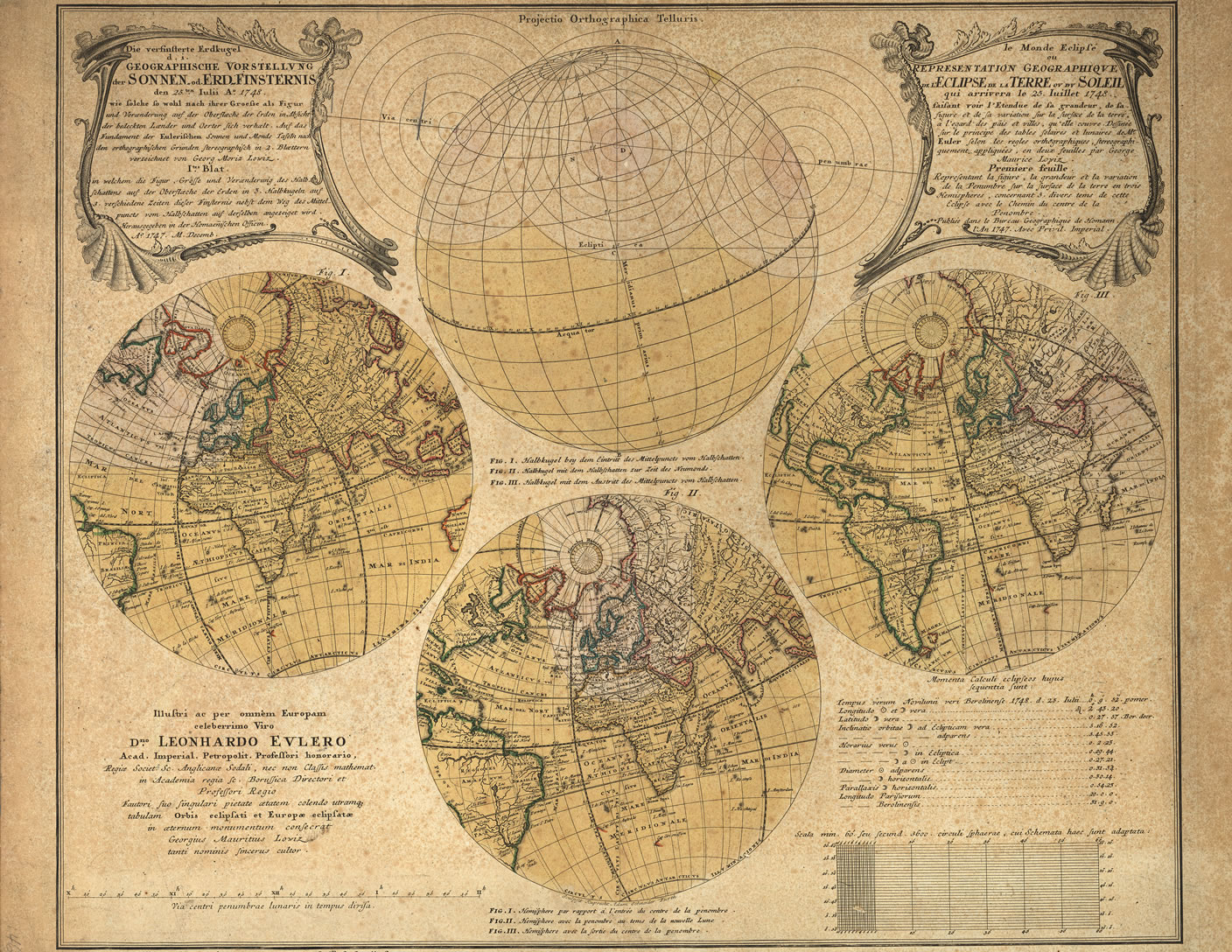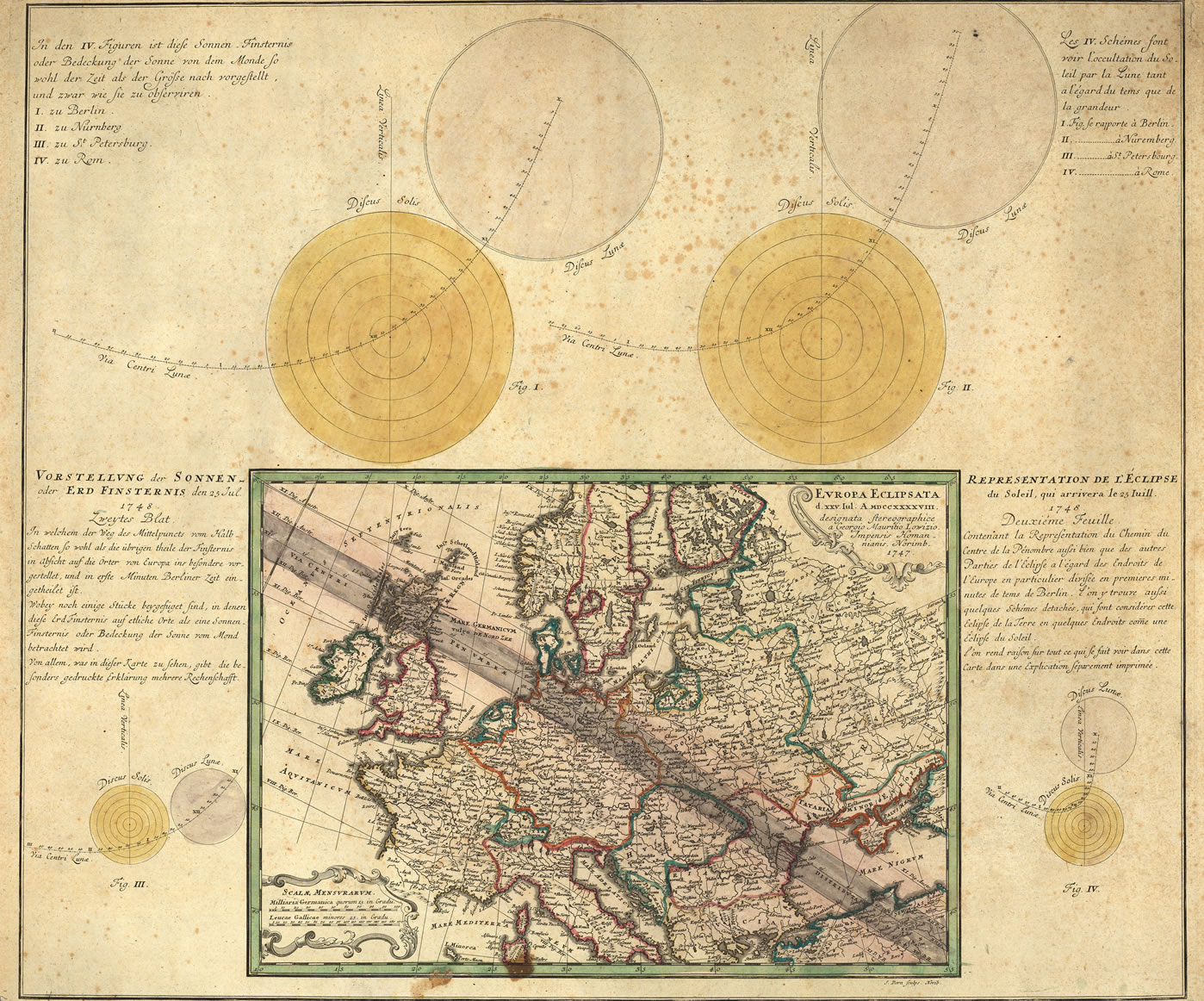Predicting solar eclipses
Besides the saros, other methods based on theories of the sun and moon and geometric considerations were already used to forecast solar eclipses in ancient times. Ptolemy's "Almagest" was dedicated to this very task. He studied the conditions under which solar eclipses can occur, constructed tables and applied geometric methods.
Nevertheless, Johann Kepler was the first to find a satisfactory technique with his "projection method", which is described in "Tabulae rudolphinae" (Ulm, 1627) and was eventually improved considerably, such as by John Flamsteed in his "Doctrine of the sphere" (London, 1680).

Predicting with graphics
A solar eclipse was predicted for a particular place with the aid of astronomical tables, which could be used to ascertain the positions and movements of the sun and the moon. The phases and size of an eclipse were then determined graphically for a particular place.
Tobias Mayer devised a method that was laborious but extremely popular for a long time and yielded extremely accurate results. His technique was essentially very similar to Johann Kepler's.
To predict the solar eclipse of 25 July 1748, Moritz Lowitz used Euler's solar and lunar tables and designed two tables, which he dedicated to him. Lowitz explained all the details of his construction in an accompanying document.


